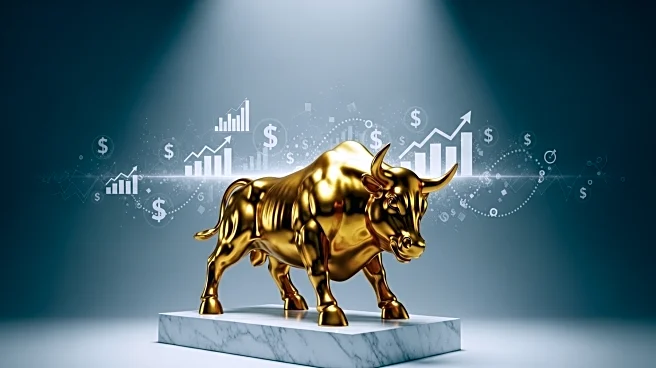What's Happening?
The price of gold has reached a historic high, surpassing $4,000 for the first time. This milestone is attributed to increased demand driven by price expectations and the desire to hold gold as a secure asset. Since October 2020, the price of gold has steadily risen, reflecting shifts in market equilibrium. The increase in gold prices has also led to a higher quantity supplied, as producers respond to the lucrative market conditions. The signaling and incentive functions of price have played a crucial role in reallocating resources towards the gold market, as investors and producers adjust their strategies to capitalize on the rising prices.
Why It's Important?
The surge in gold prices has significant implications for various stakeholders, including investors, producers, and policymakers. For investors, gold serves as a hedge against inflation and economic uncertainty, making it an attractive asset during volatile market conditions. Producers benefit from increased profitability, prompting further investment in gold mining and production. Policymakers may need to consider the impact of rising gold prices on inflation and economic stability, as shifts in commodity prices can influence broader economic indicators. The dynamics of supply and demand in the gold market highlight the interconnectedness of global economic factors and the role of commodities in shaping financial strategies.
What's Next?
As gold prices continue to rise, stakeholders will likely monitor market trends and adjust their strategies accordingly. Investors may increase their holdings in gold, seeking to capitalize on its status as a safe haven asset. Producers might expand operations to meet growing demand, potentially leading to increased exploration and mining activities. Policymakers could assess the implications of high gold prices on inflation and economic stability, considering potential regulatory measures to address market volatility. The ongoing shifts in the gold market will require careful analysis and strategic planning from all involved parties.
Beyond the Headlines
The rise in gold prices underscores broader economic trends, including concerns about inflation and currency stability. As a tangible asset, gold offers security in times of economic uncertainty, reflecting deeper anxieties about financial systems and geopolitical tensions. The allocation of resources towards gold production may also have environmental and ethical implications, as increased mining activities can impact local communities and ecosystems. The long-term effects of these market dynamics could influence global economic policies and investment strategies, highlighting the complex interplay between commodities and economic stability.











